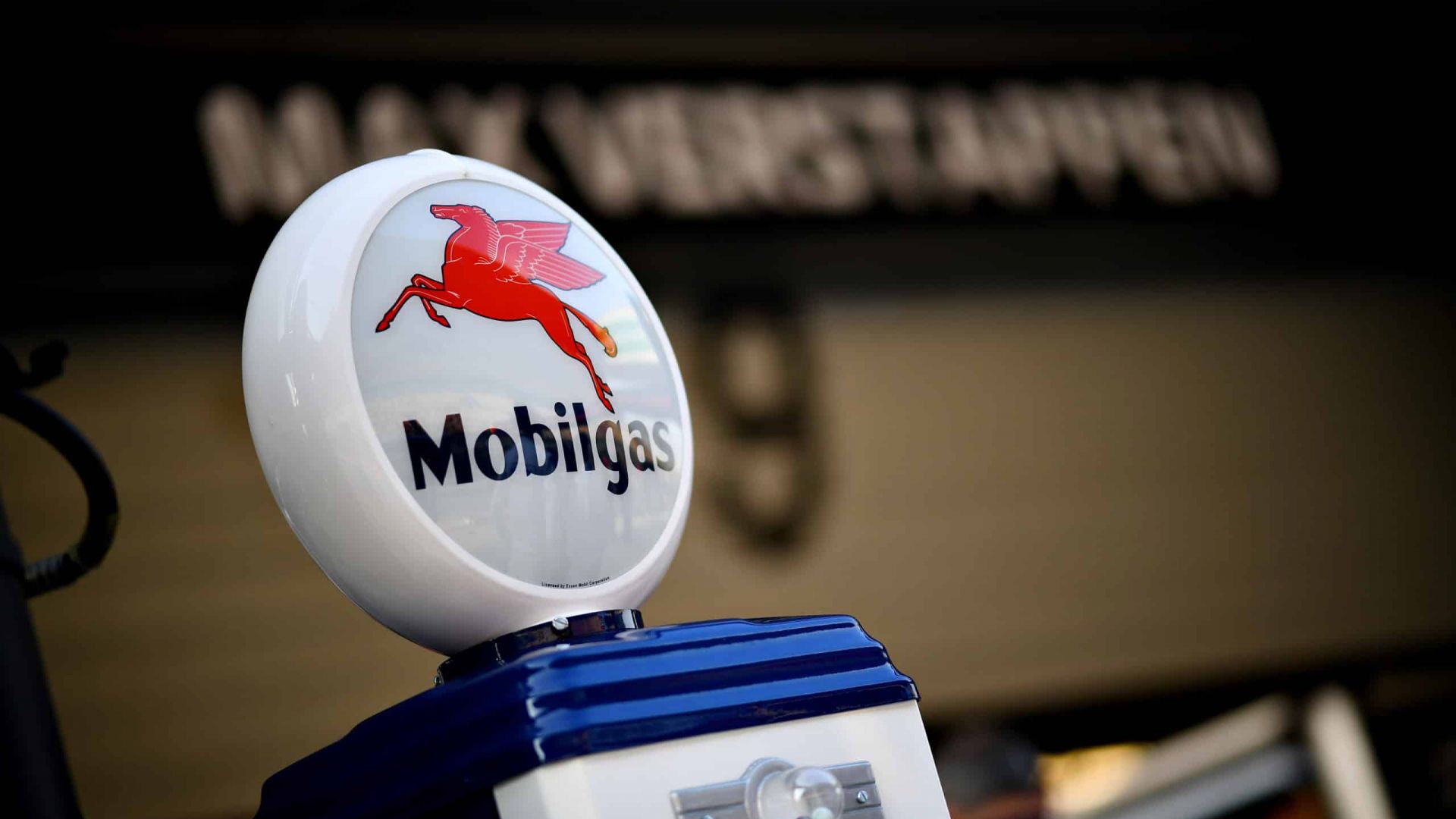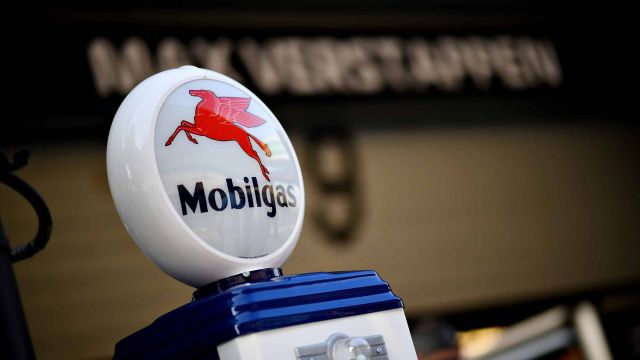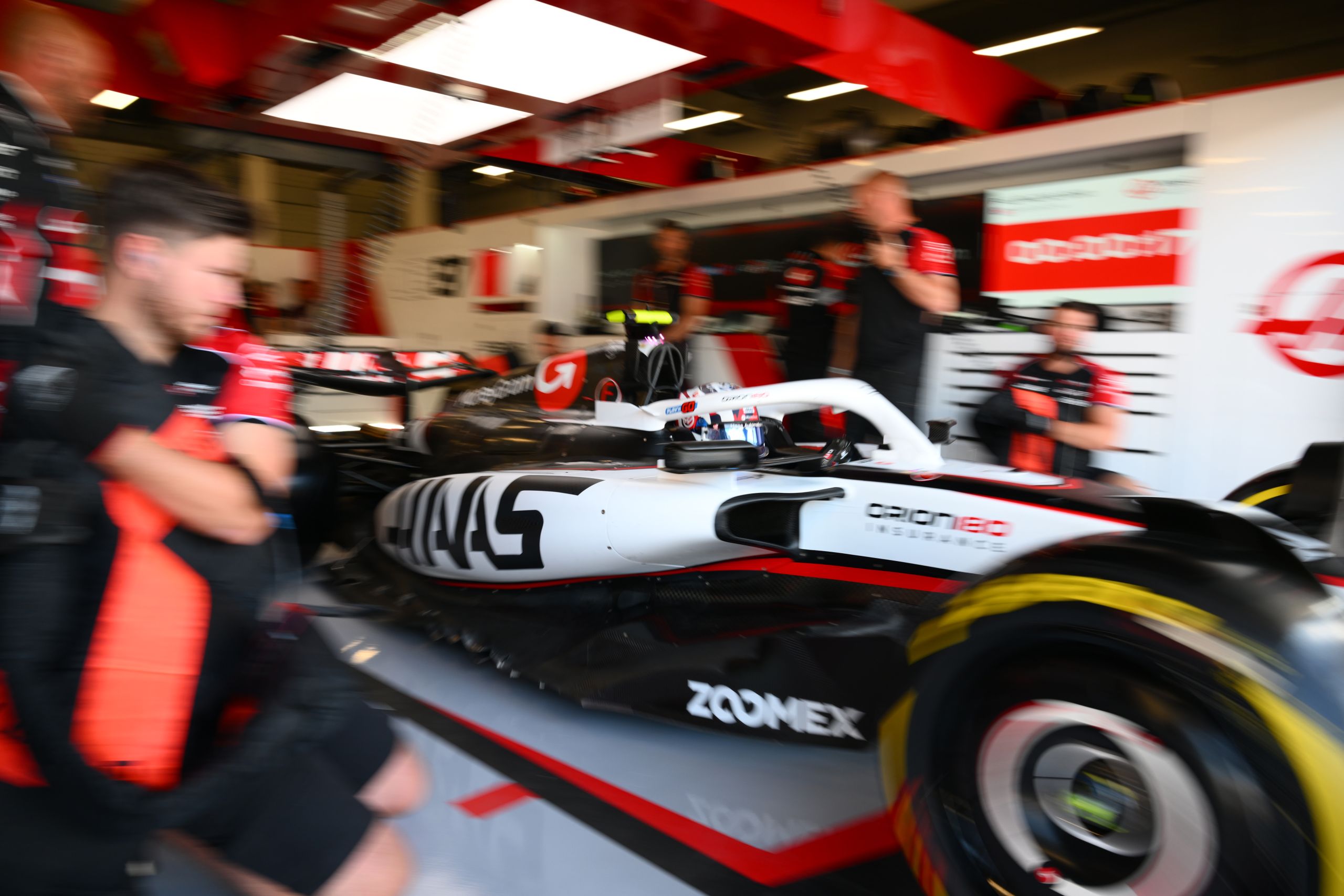Formula 1 Fuel Tank Safety Explained


Formula 1 racing is renowned for its high speed and cutting-edge technology, but behind the scenes, safety is paramount. One of the critical areas of focus is the fuel tank, which has evolved significantly over the years to ensure the utmost protection for drivers.
Modern F1 fuel tanks are constructed from highly durable materials like Kevlar and are designed as a single rubber bladder to meet stringent FIA safety regulations. These tanks are equipped with advanced safety features, including multiple fuel flow meters and specialized safety data sheets for each type of fuel, to minimize the risk of fire and ensure optimal performance under the extreme conditions of racing.
Unfortunately, the road to this safety milestone in Formula 1 is paved with several lost lives due to ignition from tank ruptures. Drivers lost to fatal vehicle crashes include such beloved names as Lorenzo Bandini, Roger Williamson, Stuart Lewis Evans, and Piers Courage. Other F1 greats, like Niki Lauda and Clay Regazzoni, would have lost their lives during tank rupture incidents without the intervention of fellow competitors and safety marshals. Even today, Jackie Stewart recounts with dread the feeling of being trapped in his BRM and soaked in fuel after a nasty crash, a situation so precarious that the whole scene could have gone up in flames any second.
Another development besides fuel bags that saved lives on the track was fireproof race suits. Before using fireproof suits was the norm, F1 drivers frequently refused to wear safety harnesses for fear of being trapped in their vehicles in the event of a fire. Vehicular design advancements that assuaged fire fears began with McLaren’s introduction of the 1981 MP4, which featured a carbon fibre monocoque with tanks placed inside the tub to ensure that they remained intact. Other teams followed suit shortly after.
F1 Fuel Tank Regulations and Standards
The safety of fuel tanks in Formula 1 is governed by stringent regulations set by the Fédération Internationale de l’Automobile (FIA). These regulations are designed to ensure that fuel tanks can withstand the extreme conditions of high-speed racing and potential crash impacts. According to the FIA’s technical regulations, all F1 fuel tanks must be constructed as a single rubber bladder, which is then housed within a strong composite structure to provide additional protection.
The FIA mandates that these fuel tanks undergo rigorous crash testing to simulate various impact scenarios. This includes tests for puncture resistance, ensuring that the tank can withstand sharp objects and high-pressure impacts without leaking fuel. Additionally, the tanks must be fire-resistant, and capable of withstanding high temperatures without igniting, which is crucial for driver safety in the event of an accident.
Recent updates to the regulations have also focused on the integration of fuel tanks within the car’s monocoque structure. This design reduces the risk of rupture during a crash and also helps in maintaining the car’s structural integrity. The placement and securing of the fuel tank are checked to comply with these standards.
The FIA requires the use of multiple fuel flow meters to monitor the amount of fuel being used and to detect any anomalies that might indicate a leak or other issues. These meters are part of a broader set of safety protocols that include the use of non-return valves and anti-surge baffles, which prevent fuel from moving around excessively within the tank during high-speed manoeuvres.
The Progression from Metal to Rubber Tanks
In the 1950s, Formula 1 fuel tanks were comprised of aluminium cases seated behind the cockpit. The lines fueling the engine were aligned forward, past the driver, to reach the engine. Like Lancia’s D50s, some designs deviated from this standard to seat the pannier tanks on the sides of the cockpit instead, which improved handling by ensuring a consistent weight at the vehicle’s tail. However, the caveat was that the driver had to worry about potential tank failures on either side of him. The advent of rear-engine F1 cars moved tanks to the front, seating them above the driver’s legs.
Malleable rubber bag tanks were first introduced in Jaguar’s C-type racing sportscars in the early 1950s. This then-unconventional design’s main advantage was that it was less likely to get pierced on impact or chafed by attachment straps or chassis tubes.
These prototypal bag tanks were initially housed inside aluminium tanks for safety’s sake. Still, they posed some concerns that were eventually addressed by Aero Tec Laboratories (ATL), an American firm, in the 1970s. ATL, led by former F1 racer Peter Regna, created a revolutionary safety measure for these tanks that prevented fuel from pouring out of the tank even after a pipe rupture. In short, when a major impact occurs, the frangible components of the fuel line snap at specific points and the couplings, which are also breakable, automatically close, thereby sealing the bag.
Another stroke of genius pioneered by ATL was a reinforced fuel safety cell that was less prone to punctures. In recent decades, advancements have focused mostly on the bag itself to ensure a more durable vessel for fuel, leading today’s fuel tanks to be composed of a weave of polyurethane and Kevlar.
Before the rules on fuel tank location and size were standardized, other design optimization attempts included the placement of small fuel cells distributed strategically around the cockpit. Typically, this meant one was above the driver’s legs, and two were seated in the back on each side of him. Today, however, Formula 1 regulations are quite clear that fuel tanks should be stored in the monocoque rear to ensure driver safety and maintain consistency and fairness in competing vehicles’ design. As a result, many Formula 1 innovations focus on more subtle design and structural elements while improving safety functions.
F1 Fuel Tank Safety Features
Modern Formula 1 fuel tanks are equipped with a variety of advanced safety features designed to protect drivers and minimise risks during races. These features are the result of decades of innovation and stringent regulatory requirements aimed at ensuring maximum safety.
1. Advanced Materials and Construction: The primary safety feature of an F1 fuel tank is its construction using high-strength materials like Kevlar and other reinforced composites. These materials provide excellent resistance to punctures and impacts, ensuring that the fuel remains contained even under extreme conditions. The tanks are essentially a single rubber bladder housed within a strong composite shell, offering multiple layers of protection.
2. Non-Return Valves: To prevent fuel from leaking in the event of a crash, F1 fuel tanks are fitted with non-return valves. These valves allow fuel to flow in one direction only, ensuring that if a fuel line is severed or damaged, the fuel cannot escape from the tank.
3. Anti-Surge Baffles: Inside the fuel tank, anti-surge baffles are installed to prevent fuel from sloshing around during high-speed corners and rapid deceleration or acceleration. These baffles help maintain the car’s balance and stability, reducing the risk of fuel starvation to the engine and minimizing the chances of a fuel-related incident.
4. Fuel Flow Meters: Multiple fuel flow meters are integrated into the system to monitor the rate at which fuel is consumed. These meters provide real-time data to the team and the FIA, ensuring that any irregularities or potential leaks can be detected immediately. This monitoring is crucial for maintaining both performance and safety standards.
5. Fire-Resistant Design: The design of the fuel tank also includes fire-resistant properties. The materials used can withstand high temperatures, and the tank is designed to minimize the risk of ignition. In the unfortunate event of a crash, these fire-resistant features are critical in preventing fuel from catching fire, thereby protecting the driver.
6. Secure Mounting: The fuel tank is securely mounted within the car’s monocoque structure, which is the central part of the car designed to protect the driver. This secure mounting ensures that the tank remains intact and in place during a crash, further reducing the risk of rupture or leakage.
7. Safety Data Sheets and Protocols: The fuel used in Formula 1 comes with a detailed safety data sheet, outlining the properties of the fuel and the necessary precautions for handling and storage. Teams follow strict protocols when dealing with fuel, ensuring that safety measures are adhered to at all times, both on and off the track.
These safety features collectively ensure that Formula 1 fuel tanks are among the safest components in a race car, capable of withstanding the extreme demands of high-speed racing while providing robust protection for the drivers.
Formula 1 Fuel Tanks Today
Bag tanks are the antithesis of the sleekness and elegance in geometry and implementation often associated with automotive engineering. These tanks are oddly shaped for seating in the back end of the monocoque and ribbed to keep the over 30 sections of the tank intact. However, this space-saving and safety-driven design can hold a whopping 30 gallons, or 110 litres or kilograms of fuel, the maximum allowed for a race.
The tank is wide at the base and tapers off at around neck height on any given driver. The end of the bag extrudes forward from the rear end of the monocoque. This design ensures a better fit in the car and keeps fuel stored in such a way that the vehicle maintains a low center of gravity. The tank is fitted to the driver’s seat and the tub using studs that keep it upright.
Another factor that keeps fuel seated low in the car is the use of baffles. This pair of rubber shelves keeps the fuel from moving too much in the tank while cornering or making other tricky maneuvers that can affect the car’s handling. Another benefit of this unique design is that it ensures easier delivery to the engine than a conventional tank.
Two openings can be found at the back of the bag tank: one on top for the fuel lines and one on the bottom for the mechanical pump. The former is a frangible, self-sealing coupling directly to the fuel line; the latter, meanwhile, collects and pressurizes fuel from the collector on the bottom of the tank for expedient travel up to the fuel lines. Pit crews use holes on either shoulder to fill the bag tank. This design may sound unusual to accommodate pit garages on either side of the vehicle.
All in all, like many Formula 1 parts and design choices, the design of the modern fuel tank is tailored specifically for the sport to maximize safety, optimize space usage, and maintain a certain level of flexibility and adaptability during races. Many designers prefer the elegance of a tall, thin tank for the sake of efficiency, but this type of design is not ideal for an F1 vehicle.
Future Trends
As Formula 1 continues to evolve, so too does the focus on enhancing fuel tank safety. Several emerging trends and innovations promise to further improve the safety and efficiency of fuel systems in the sport.
1. Sustainable Fuels: One of the most significant trends in Formula 1 is the shift towards sustainable and environmentally friendly fuels. The FIA has committed to making Formula 1 carbon neutral by 2030, and part of this initiative involves the development and use of synthetic and biofuels. These new fuels are designed to burn cleaner and more efficiently, reducing the overall environmental impact. The transition to sustainable fuels will require new safety protocols and fuel tank designs to accommodate different chemical properties and behaviours.
2. Enhanced Materials: Advances in material science are likely to lead to even stronger and lighter fuel tank materials. Researchers are exploring new composites and nano-materials that offer superior resistance to punctures and impacts while reducing the overall weight of the tank. These materials not only improve safety but also contribute to better car performance by reducing weight.
3. Smart Sensors and IoT Integration: The integration of smart sensors and Internet of Things (IoT) technology into fuel tanks is another promising trend. These sensors can provide real-time data on fuel levels, pressure, temperature, and potential leaks. This data can be transmitted to the team’s pit crew and the FIA, allowing for immediate response to any anomalies. Enhanced monitoring capabilities ensure that any issues can be detected and addressed before they become critical.
4. Improved Crash Testing Protocols: As safety standards continue to rise, the FIA is likely to implement more rigorous crash testing protocols for fuel tanks. These enhanced tests will simulate a wider range of crash scenarios and impact conditions, ensuring that fuel tanks can withstand even the most severe accidents. Continuous improvement in testing methodologies will help identify potential weaknesses and drive innovation in fuel tank design.
5. Modular Fuel Tank Designs: Future fuel tank designs may become more modular, allowing for easier maintenance and replacement of damaged components. Modular designs can also facilitate quicker adjustments to accommodate different fuel types and racing conditions. This flexibility can improve both safety and efficiency, as teams can optimize their fuel systems for specific races.
6. Collaboration with Aerospace Technology: The crossover of technology from the aerospace industry to Formula 1 is an ongoing trend. Innovations in aerospace fuel systems, known for their stringent safety requirements, can be adapted for use in F1 cars. This collaboration can lead to the development of more advanced fuel tanks that offer unparalleled safety and performance.
7. Regulatory Evolution: As technology advances, so too will the regulations governing fuel tank safety. The FIA is expected to continuously update its guidelines to incorporate new safety features and technologies. This proactive approach ensures that Formula 1 remains at the forefront of safety innovation.
By embracing these future trends, Formula 1 aims to not only maintain but enhance the safety standards of its fuel tanks, ensuring that the sport remains as safe as it is thrilling.
Read: What fuel do Formula 1 cars use?
How A Formula 1 Fuel Tank Works
This video explains how a Formula 1 fuel tank is designed, and how it works.





